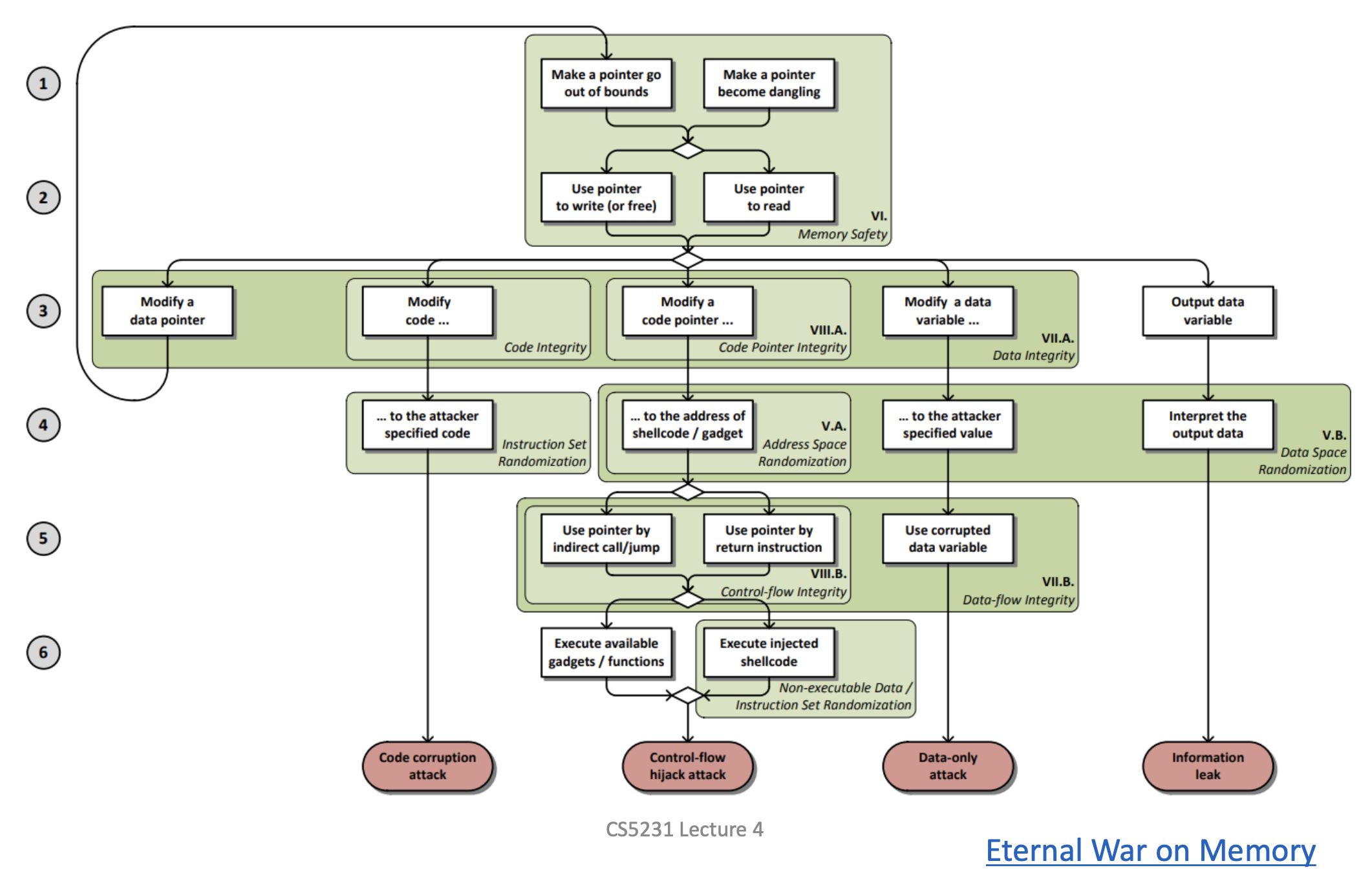Notes of Memory Attacks and Defenses
Published:
Fight of memory attacks and defenses
- Attack and Defense Overview
- Ways: buffer overflow, format string vuln,
- Keys:
- Have the payload in the memory, e.g., stored in data, libc, and gadgets. DEFENSE: NX
- Be able to change the control flow (branch targets are hard-coded except for on heap or on stack). Target addr: forward-edge (function pointer, virtual function table) and backward-edge (the ret addr). DEFENSE: CFI, including vtable verification, indirect function call checker, indirect function call sanitizer, the stack canary, and shadow stack
- Know the location of the payload. DEFENSE: (address space / data / code) randomization
- Execute the payload. DEFENSE: NX.
- Further explanation of DEFENSE
- CFI: cross-language forward-edge CFI can be realized using IFCC of LLVM. It supports any language and indirect calls. The checking is initialized after the libraries are loaded and before constructors are initiated.
- A: Overflow the stack buffer
- A: Overflow the stack buffer to overwrite the return address so as to go to any other addr
- D: stack canary to detect the overwrite of the ret addr, i.e., StackGuard. But it can be bypassed.
- A1: go to injected PoC stored in stack/heap data and execute malicious code (Malicious code injection)
- D1: Not allow the data segment to be executed, i.e., DEP (data execution protection) or NX protection
- A2: go to functions in the c library shared object, i.e., ret2libc. For example, prepare the arguments (the addr of
/bin/shin the libc memory space) for thesystem()function and its return value on the stack and return to thesystem()function. - D2: randomize the address space layout, i.e., ASLR
- A3: go to gadgets in libc, i.e., return-oriented programming (ROP)
- A: Overflow the heap buffer
- A1: change the target addr. leverage the dereference when removing one heap block from the chain, e.g., when executing *(b→l)=next next block, we modify the content pointed by h→l. If h→l is already changed to the ret addr, we can change the ret addr.
- A2: heap spraying, i.e., allocate lots of heap memory to increase the probability of code execution. DEFENSE: ad hoc CFI techniques.
- A: arbitrary memory read/write
- A: dereference a raw pointer to read/write. The address can be anywhere as long as you know it.
- D: ASLR and data-space randomization
- A: r/w the memory inside the current function using format string vulnerability
- D: stack protector (in the compiler) to protect stack buffers, i.e., check if they are overflowed after the function exits
- A: Structured Exception Handler / SEH-based buffer overflow
Explanation of the below taxonomy

